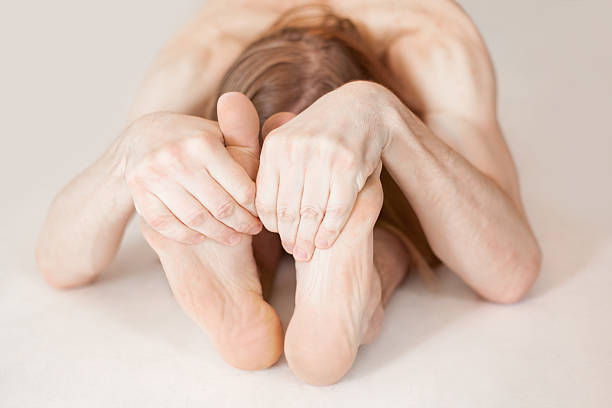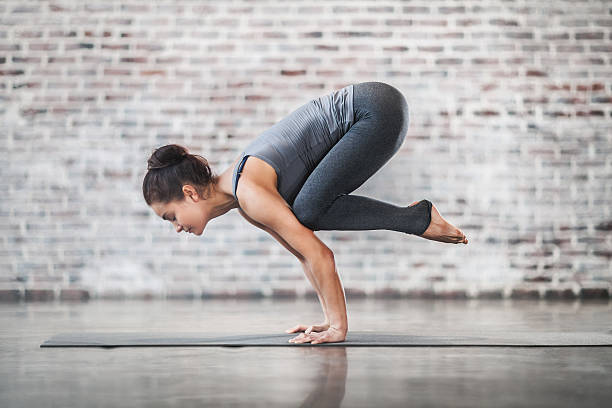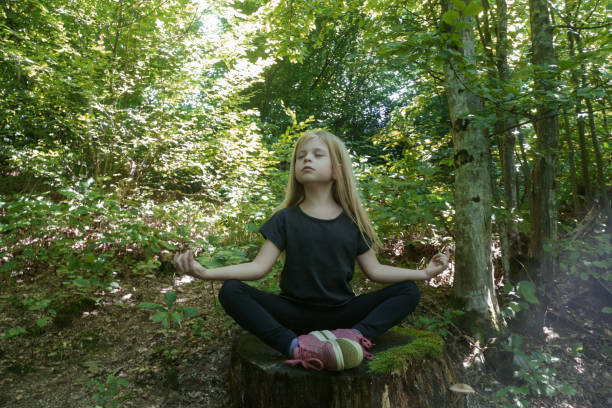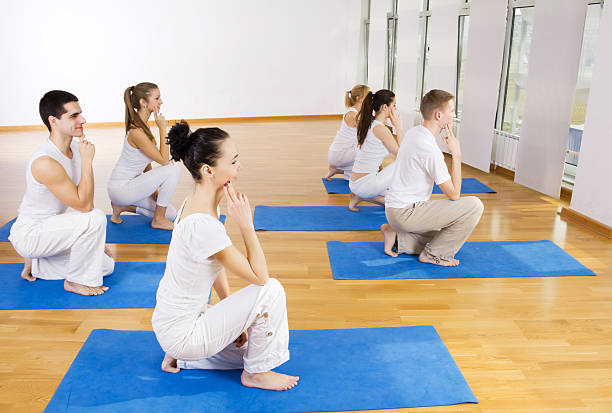
What is the difference between a beginner and an intermediate practitioner? Say you’ve been at the practice for a number of months but don’t trust yourself to jump into a level two class yet. Or you’re a stay-at-home yogi and wondering what the next steps are in refining your practice. Perhaps you marvel at the strength and finesse of your teacher or fellow students and wonder how they’ve arrived at such grace. How do we take the practice to the intermediate level?
Commitment
First, you must show up consistently on your mat. Beginners are sporadic. Sometimes, you’re full of energy and vigor and can hit the mat five times a week. Then, one month later, something changes–the weather or stress level at work. Or, it could be the phase of the moon. The intermediate practitioner is a stickler for her routine. It’s important to find what you like. An early morning class you can attend before the day gets out of hand, an evening home routine that includes an online platform…whatever you prefer. Then, learn to show up even when you’re not feeling it. The magic starts when you meet the mat, even if you’re not feeling like it.
Curiosity
Beginners are satisfied with just the minimum information needed to pass the class. He must know how to use his left hand and where to place his right foot. It is important to remind him to breathe. He may want to learn some simple arm balances or mantras. Too much information can overwhelm him and discourage him from returning to the practice.
The intermediate practitioner is thirsty. He is curious about the wisdom of the body, the way muscles, bones, and the breath work together, and how energy can be efficiently moved. He’s hungry for mysticism, philosophy, and storytelling. He begins to realize that his practice goes far beyond his mat.
Discernment
Beginners may not have enough experience to recognize bullshit. She may believe anything she hears in a yoga lesson. On the other hand, a beginner might be too skeptical and suspicious. The intermediate practitioner strikes a balance between being open-minded and asking intelligent, insightful questions. She explores various perspectives–perhaps testing different styles of yoga, checking out a variety of studios or online options, or reading material from a wider range of credible authors. She can also dive in deeper by taking part in workshops, retreats, or immersions. She also knows that everybody is different and that she must ultimately choose the practice that best suits her needs.
Core
The ability to move and stabilize from the core is what makes the most physiological difference between beginner and intermediate asana practices. Intermediate practitioners do not see a strong core as a lump of rock at the center of their body. Instead, they view it as a layer of muscles that wraps around the abdominal cavity. She can feel the different core engagements that support the spine at various angles. Her core stability allows for her to safely perform movements like Chaturangas, Handstands, and deeper backbends. Her core engagement makes her asanas light and efficient so she can do more in less time.
Patience
Beginners either believe that the difficult poses are immediately accessible and will be comfortable for them to practice, or they think the poses will never be available. They don’t bother trying. The intermediate practitioner understands that everything comes at its own pace. The difficult poses take a lot of time and disciplined effort. Rarely do they appear overnight. Although not everyone can achieve advanced poses, with effort and patience, most intermediate poses are achievable. We are often surprised at how much we can achieve with the right dedication and patience.
Breath
We struggle to keep up, place our left foot exactly where it should be, and stay upright. We learn as we refine our practice that breath is the key to all that we do. It helps us move through the practice and not get winded. It allows us to place the left leg exactly. Intermediate practitioners use breathing techniques like ujjayi breathing, alternate nostril breathing, and shining skull breathing. He knows how he can use inhales in order to achieve lightness and expand the body. He knows how to exhale to achieve both softness and stability. He spends most of his practice focused on his breathing, using it to guide his movements rather than the opposite.
She is interested in exploring consciousness. She is curious about exploring consciousness. She devotes time and energy to developing a practice of meditation. She believes that meditation will help her improve her asana practice and her overall quality of life. She begins to understand her attachments, fears, and illusionary thinking through meditation. She can think, act, and communicate with more compassion and thoughtfulness through her meditation practice.


